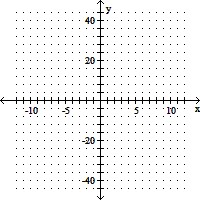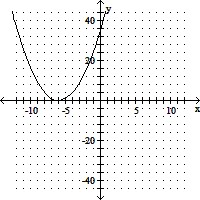Translate the problem to a system of equations; then solve using the elimination method.Roberto invested some money at an APR of 8 percent, and then invested $3000 more than twice this amount at an APR of 9 percent. His total annual income from the two investments was $3650. How much was invested at 9 percent?
A. $26,000
B. $29,000
C. $9000
D. $2900
Answer: B
You might also like to view...
Graph the quadratic function. Determine the vertex, find the equation of the axis of symmetry, find any x- and y-intercepts, and state the domain and range in interval notation.f(x) = x2 - 12x + 36
A. vertex: (6, 36)
axis of symmetry: x = 6
x-intercept: none; y-intercept: 72
domain: (-?, ?); range: [36, ?)
B. vertex: (-6, 0)
axis of symmetry: x = -6
x-intercept: -6; y-intercept: 36
domain: (-?, ?); range: [0, ?)
C. vertex: (6, 0)
axis of symmetry: x = 6
x-intercept: 6; y-intercept: 36
domain: (-?, ?); range: [0, ?)
D. vertex: (-6, 36)
axis of symmetry: x = -6
x-intercept: none; y-intercept: 72
domain: (-?, ?); range: [36, ?)
Convert from binary form to the indicated base.11010100100two to base eight
A. 2111eight B. 3244eight C. 16888eight D. 4222eight
In the following question(s), FN represents the Nth Fibonacci number.F2001/F2000 rounded to three decimal places gives
A. 1.001. B. 1.618. C. 0.618. D. 1.414. E. none of these
The general term of a sequence is given. Determine whether the given sequence is arithmetic, geometric, or neither. If the sequence is arithmetic, find the common difference; if it is geometric, find the common ratio.2, 8, 32, 128, 512, . . .
A. Geometric, r = 4
B. Geometric, r = 
C. Arithmetic, d = 4
D. Neither